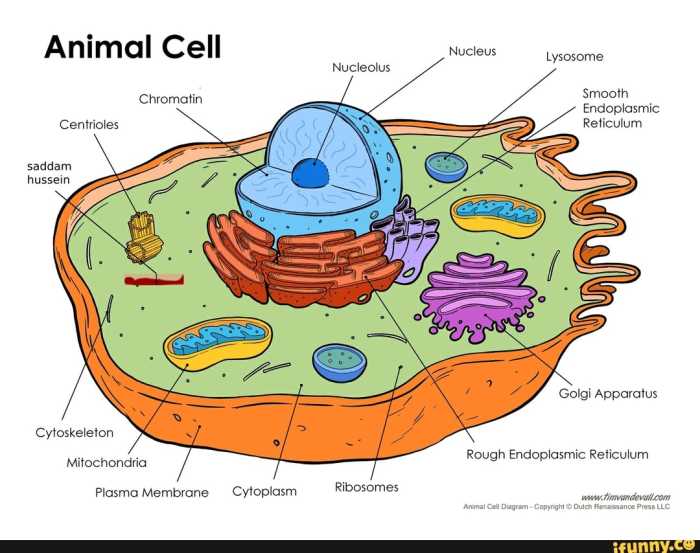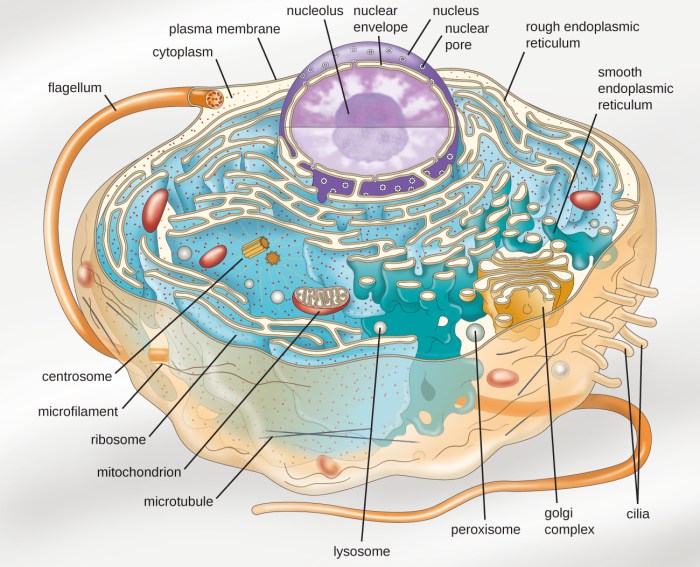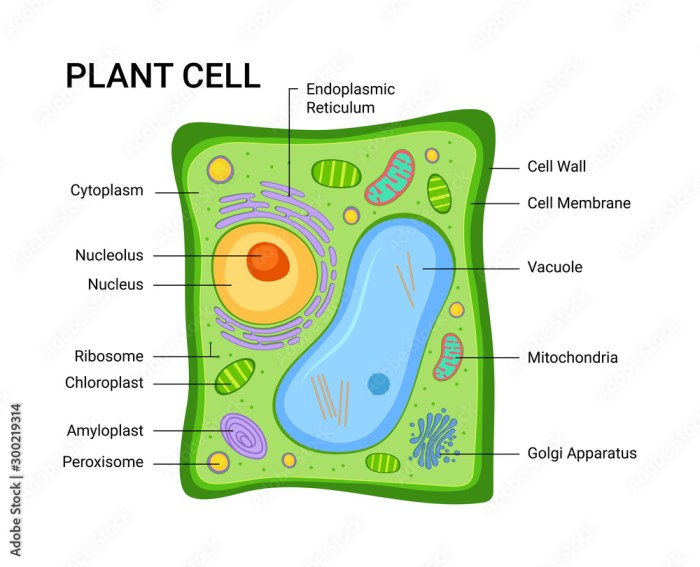Identify the structures in the cell pictured on the right – In the realm of cell biology, understanding the intricate structures within cells is paramount. This comprehensive guide delves into the identification of these structures, providing a detailed examination of their functions and significance.
From the nucleus, the control center of the cell, to the cytoskeleton, which provides structural support, each component plays a vital role in maintaining cellular integrity and function. Embark on this journey of discovery as we uncover the secrets of the cell.
Cell Structures

The cell is the basic unit of life, and it is made up of many different structures. These structures work together to perform the functions that are necessary for life.The cell membrane is a thin layer that surrounds the cell.
It protects the cell from its surroundings and regulates the movement of substances into and out of the cell.The cytoplasm is the jelly-like substance that fills the cell. It contains all of the cell’s organelles, which are small structures that perform specific functions.The
nucleus is the control center of the cell. It contains the cell’s DNA, which is the genetic material that determines the cell’s characteristics.The mitochondria are the powerhouses of the cell. They produce energy that the cell needs to function.The endoplasmic reticulum is a network of membranes that folds and transports proteins.The
Golgi apparatus is a stack of membranes that modifies and packages proteins.The lysosomes are small sacs that contain enzymes that break down waste products.The peroxisomes are small sacs that contain enzymes that break down toxic substances.The ribosomes are small structures that produce proteins.The
cytoskeleton is a network of fibers that provides support and shape to the cell.
Organelles and their Functions
Organelles are small structures that perform specific functions within the cell. They are found in all cells, and they are essential for the cell’s survival.The following are some of the most important organelles and their functions:*
-*Mitochondria
The mitochondria are the powerhouses of the cell. They produce energy that the cell needs to function.
-
-*Endoplasmic reticulum
The endoplasmic reticulum is a network of membranes that folds and transports proteins.
-*Golgi apparatus
The Golgi apparatus is a stack of membranes that modifies and packages proteins.
-*Lysosomes
The lysosomes are small sacs that contain enzymes that break down waste products.
-*Peroxisomes
The peroxisomes are small sacs that contain enzymes that break down toxic substances.
-*Ribosomes
The ribosomes are small structures that produce proteins.
-*Cytoskeleton
The cytoskeleton is a network of fibers that provides support and shape to the cell.
Cell Membrane and its Significance

The cell membrane is a thin layer that surrounds the cell. It protects the cell from its surroundings and regulates the movement of substances into and out of the cell.The cell membrane is composed of a phospholipid bilayer, which is a double layer of phospholipids.
Phospholipids are molecules that have a hydrophilic (water-loving) head and a hydrophobic (water-hating) tail. The hydrophilic heads face outward, while the hydrophobic tails face inward. This arrangement creates a barrier that is impermeable to most molecules.The cell membrane also contains proteins that help to regulate the movement of substances into and out of the cell.
These proteins include channels, carriers, and pumps. Channels are pores that allow small molecules to pass through the cell membrane. Carriers are proteins that bind to specific molecules and transport them across the cell membrane. Pumps are proteins that use energy to move molecules across the cell membrane against a concentration gradient.The
cell membrane is essential for the cell’s survival. It protects the cell from its surroundings and regulates the movement of substances into and out of the cell.
Nucleus and its Contents
The nucleus is the control center of the cell. It contains the cell’s DNA, which is the genetic material that determines the cell’s characteristics.The nucleus is surrounded by a nuclear envelope, which is a double membrane that protects the nucleus from the rest of the cell.
The nuclear envelope contains pores that allow molecules to pass into and out of the nucleus.The nucleus contains a number of structures, including the nucleolus, chromosomes, and chromatin. The nucleolus is a small, dense structure that produces ribosomes. Chromosomes are long, thin structures that contain the cell’s DNA.
Chromatin is a complex of DNA and proteins that is found in the nucleus.The nucleus is essential for the cell’s survival. It controls the cell’s activities and stores the cell’s genetic information.
Cytoplasm and its Components

The cytoplasm is the jelly-like substance that fills the cell. It contains all of the cell’s organelles, which are small structures that perform specific functions.The cytoplasm is composed of a number of different components, including water, proteins, carbohydrates, and lipids.
Water is the most abundant component of the cytoplasm, and it provides the medium for all of the cell’s chemical reactions. Proteins are the most important components of the cytoplasm, and they perform a wide variety of functions, including structural support, enzyme catalysis, and transport.
Carbohydrates are used for energy and as building blocks for other molecules. Lipids are used for energy storage and as structural components of the cell membrane.The cytoplasm is essential for the cell’s survival. It provides the medium for all of the cell’s chemical reactions and contains all of the cell’s organelles.
Cytoskeleton and its Functions: Identify The Structures In The Cell Pictured On The Right

The cytoskeleton is a network of fibers that provides support and shape to the cell. It is composed of three types of fibers: microtubules, microfilaments, and intermediate filaments.Microtubules are long, thin fibers that are composed of the protein tubulin. They are responsible for the cell’s shape and for transporting materials within the cell.Microfilaments
are thin, flexible fibers that are composed of the protein actin. They are responsible for the cell’s movement and for maintaining the cell’s shape.Intermediate filaments are fibers that are intermediate in size between microtubules and microfilaments. They are composed of a variety of proteins and are responsible for providing support and shape to the cell.The
cytoskeleton is essential for the cell’s survival. It provides support and shape to the cell, and it is responsible for the cell’s movement and for transporting materials within the cell.
Common Queries
What is the function of the cell membrane?
The cell membrane regulates the movement of substances into and out of the cell, maintaining cellular homeostasis.
What is the role of the nucleus?
The nucleus houses the cell’s genetic material and controls cellular activities.
What is the cytoskeleton made of?
The cytoskeleton is a network of protein filaments that provides structural support and shape to the cell.